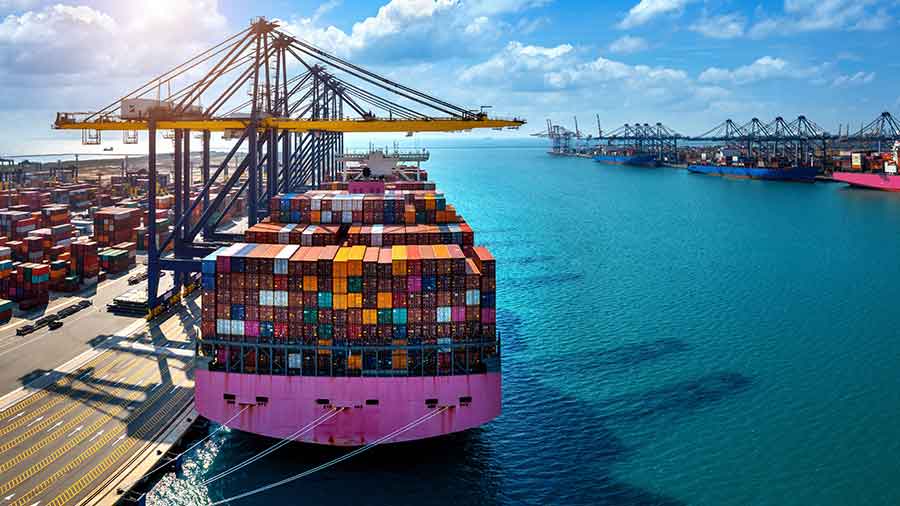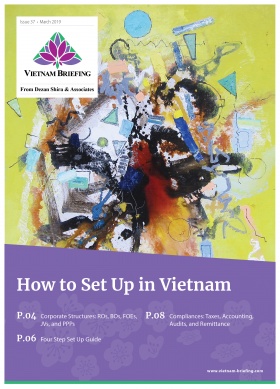Vietnam’s Year in Review and Outlook for 2020
Vietnam’s 2019 was a remarkable year for its economic growth amid a global slowdown. Gross Domestic Product (GDP) growth remained robust at about seven percent (the highest in Southeast Asia) with inflation stable at four percent.
We review 2019 and major developments investors should prepare for in 2020 including regulatory changes in labor code and visa policy.
Vietnam’s rising FDI inflow
2019 marks 10 consecutive years of increase in Foreign Direct Investment (FDI) inflow into Vietnam.
In 2019, around 3,883 new projects were licensed, up 27.5 percent in the number of projects as compared to the same period in 2018. If excluding newly granted large projects with over US$1 billion capital in the same period in 2018, the total newly registered investment capital in 2019 increased 32.5 percent as compared to the same period.
In 2019, South Korea was the top investor in Vietnam investing US$7.9 billion, followed by Hong Kong at US$7.8 billion. In the first 11 months of 2019, the largest pledged FDI also came from Hong Kong. Vietnam remains a beneficiary of the US-China trade war, and the political tension in Hong Kong, which have contributed to rising investments from both Mainland China and Hong Kong. Vietnam is being chosen by investors among other ASEAN countries because of its cultural proximity to China, low labor cost and pro-investment policies.
The processing and manufacturing sector attracted the highest amount of investment, accounting for 68 percent of Vietnam’s total FDI. The transition of multi-national corporations’ factories from China to Vietnam is the most important external factor.
In June 2019, Apple announced its plan to start trial production of the wireless earphones Airpod in Vietnam to avoid tariff expenses imposed on China by the Trump Administration. Intrinsically, the Vietnamese government has also adopted more flexible land rental policies with ready-built and built-to-suit factories to welcome manufacturing projects.
The International Finance Corporation (a member of the World Bank) expects FDI to continue to rise in 2020. Manufacturers are showing interest in the Central Region where land for industrial use is vast. However, it is critical for the government to better integrate into the global supply chain and upskill the labor force.
Rising Fintech Industry
Accounting for 36 percent of Southeast Asia’s total investment in fintech is Vietnam’s biggest milestone in 2019. These investments raise the proportion of fintech startups funded by foreign investors to 70 percent.
With 90 percent of the transactions conducted in cash, electronic payment service is the industry’s priority. 60.5 percent of fintech startups operate as payment intermediaries. According to Allied Market Research, the industry’s compound annual growth rate (CAGR) can reach 18.2 percent in the 2018-2025 period.
Apart from significant demand, government policies have also played a role in the industry’s strong growth. Introduced in September 2019, Circular 13/2019/ND-CP provides an overarching plan to create favorable conditions for startups as per Industry 4.0 standards. In particular, start-ups in hi-tech sectors will get a corporate tax exemption for four years and a 50 percent reduction for the nine years.
According to Mr. Pham Xuan Hoe, deputy director of the Banking Strategy Institute, Vietnam’s fintech market will be worth US$9 billion in 2020, making it ASEAN’s fourth-largest market. In the upcoming decade, startups are expected to work more closely with banks to promote financial inclusion through technology platforms.
Labor code 2021
This year, the Labor Code has two major changes in retirement age and overtime hours limit.
The retirement age for men has been increased from 60 to 62, and from 50 to 55 for women. The increase is inevitable to avoid labor shortages in the next decade and to address an unbalanced social insurance fund. Companies can introduce a more flexible retirement scheme whereby senior workers can choose to be freelancers, independent contractors or part-time workers.
The new code also limits overtime to 40 hours a month (300 hours a year). The cap is higher than that of other Asian countries, such as China’s 36 hours a month. However, some policymakers are advocating for an increase in the cap to 400 hours in five special sectors: garments, textiles, seafood, leather shoes, and electronics because of the seasonality in their orders. Employers and workers still need to enter a voluntary agreement before working the overtime limit.
These changes are still under review and will officially come into effect in 2021. By then, companies should already have a concrete plan to protect workers’ rights and to sustain their financial position.
Visa friendly policies
The amended Law on Entry, Exit, Transit, which will come into effect in July 2020, allows foreigners to enter coastal economic zones for 30 days without a visa. The zones need to have international airports, geographical boundaries and must be separate from the mainland. The exemption is hailed as a good policy for FDI firms to visit and gather information about potential economic zones.
In November, the government also announced that it would extend visa exemption for citizens of Japan, South Korea, Denmark, Norway, Sweden, Finland, and Belarus until December 31, 2022, if their stay does not exceed 15 days. Japan, South Korea, and Russia are key markets for Vietnam’s tourism sector. The number of tourists from these countries has an annual increase of about 30 percent in the past decade.
A flexible visa policy will entice more foreigners to come to Vietnam, thus boosting the tourism sector’s growth, bringing in foreign investments and fostering the cultural exchange between nations.
Amended Securities Law
In November 2019, the Securities Law was amended to suit the actual development in the scale of Vietnam’s stock market. Procedures and conditions related to Initial Public Offering (IPO) have been the main focus of the amended law.
To be able to file for an IPO, VND30 billion (US$2 million) charter capital of a company is required, a rise from the former requirement of VND10 billion (US$500,000). Major shareholders must retain their ownership of 20 percent of the charter capital one year after the IPO. Public companies are also subject to stricter requirements in auditing, information disclosure, and management.
Mr. Choi Ji Ung, Director of ASEAN Law Firm, applauds that the law is now close to the standards of the International Organization of Securities Commission (IOSCO) and Organization for Economic Cooperation and Development (OECD).
With new regulations to enhance transparency in the investing environment, especially for foreign investors, Vietnam hopes to make the stock market’s size equal to the country’s GDP in 2020. Larger market capitalization would help Vietnam move from a frontier market to an emerging market according to the Financial Times Stock Exchange (FTSE)’s ranking.
Outlook for 2020
The World Bank forecasts that Vietnam’s economic growth would become moderate at 6.5 percent in 2020 and 2021. Banking, tourism and retail sales would continue to be the growth drivers.
Vietnam’s open trade network makes it an attractive destination for FDI. However, this also makes Vietnam vulnerable to slowing global demand, which may affect Vietnam’s exporting industry.
However, with the implementation of structural and fiscal reforms in recent years, Vietnam would still be able to meet growth expectations in key sectors.
About Us
Vietnam Briefing is produced by Dezan Shira & Associates. The firm assists foreign investors throughout Asia from offices across the world, including in Hanoi and Ho Chi Minh City. Readers may write to vietnam@dezshira.com for more support on doing business in Vietnam.
- Previous Article Investimenti Diretti Esteri in Vietnam – Dove stanno andando gli investimenti?
- Next Article Choosing the Right Sourcing Model in Vietnam































